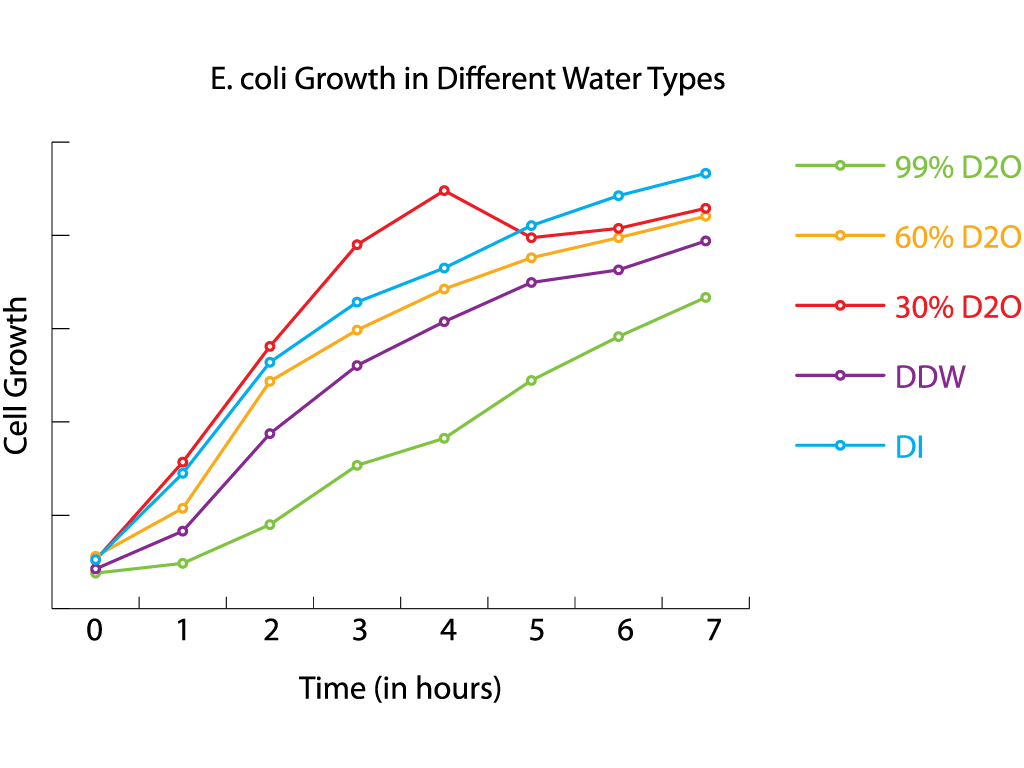Deuterium Content of Deuterium Depleted Water: 1st Trial. Anthony Salvagno, Scott Jasechko. figshare.
Retrieved 21:24, Jul 20, 2012 (GMT)
http://dx.doi.org/10.6084/m9.figshare.93089
A few days ago I made a new friend named Scott Jasechko. We met to discuss the possibility of creating a TED branded forum to UNM. We got to talking about our research and it turned out that our research interests are very much aligned and he studies water isotope amounts with relation to natural water around the planet. He’s about to publish his findings and once that goes through I’ll link to that.
It turned out that his lab has a device that can very accurately measure small concentrations of deuterium and oxygen-18 in water samples. I told him about my DDW experiments and how deuterium exchange may affect my experiments, but that I can’t quantitatively measure it’s affect or the process in general. So we got to talking and he wanted to help me out.
The data linked above is the results of the mini-collaboration that I predict will turn into more. Scott used his Picarro cavity ring down spectroscope, which means very little to me right now, to analyze the water samples I gave him. The water was used in these two experiments (each word is a separate link). And was then stored in our desiccator (with drierite to reduce moisture exchange) until yesterday (July 19, 2012).
Surprisingly, the data shows very little change from what Sigma claims (less than 1 part per million D to H) to yesterday, showing very little exchange. There are two things to consider here: (1) the machine wasn’t calibrated for such low levels of D, which skew the readings (since they actually give us negative ratios), and (2) volume may play a part in exchange.
I don’t understand the mechanism very well but I suspect that surface interactions play the largest role in deuterium exchange. Once deuterium is introduced into the sample, then I would guess diffusion takes over, but this is probably slower in nature than evaporation/other mechanisms that are involved on the surface. Basically this is a thermodynamics problem that I would need to spend 3 months thinking about to compare with experimental analysis (since that is how long the Thermo class is, 1 semester).
The follow up to this experiment should be better organized. Obviously we’ll need to redo this experiment. Scott and I are also performing another experiment where Scott has left the lid off the samples I gave him so he can see if there is a new value the spectroscope provides. From here we may want to do some longer time analysis and some other studies that we’ll have to plan. I’ll start a new thread for that, in the mean-time I hope he’ll introduce himself in the comments of this post.
Some other notes:
- I geeked out when I realized the power of this sort of collaboration. If I hadn’t been affiliated with TEDxABQ and thus this new idea of TEDxUNM (not officially licensed), I would have never met Scott. These are the sorts of collaborations that I hope can be introduced because of the Open Research IGERT proposal.
- I mega-geeked out when I realized I can do a project planning thread with someone here at the university in another lab that can also participate in the project! Open science at the core all the way.
- I super-mega-geeked out when I realized that I implemented a crucial aspect of ONS. As I wrote this post I wondered what experiments I had used the water for. Then I realized that it’s all documented and that I can show everyone what those experiments are. It’s not enough that I have it recorded by date, but also that you all saw those experiments in real-time and their use in future experiments has been realized. That’s a major win for ONS.
